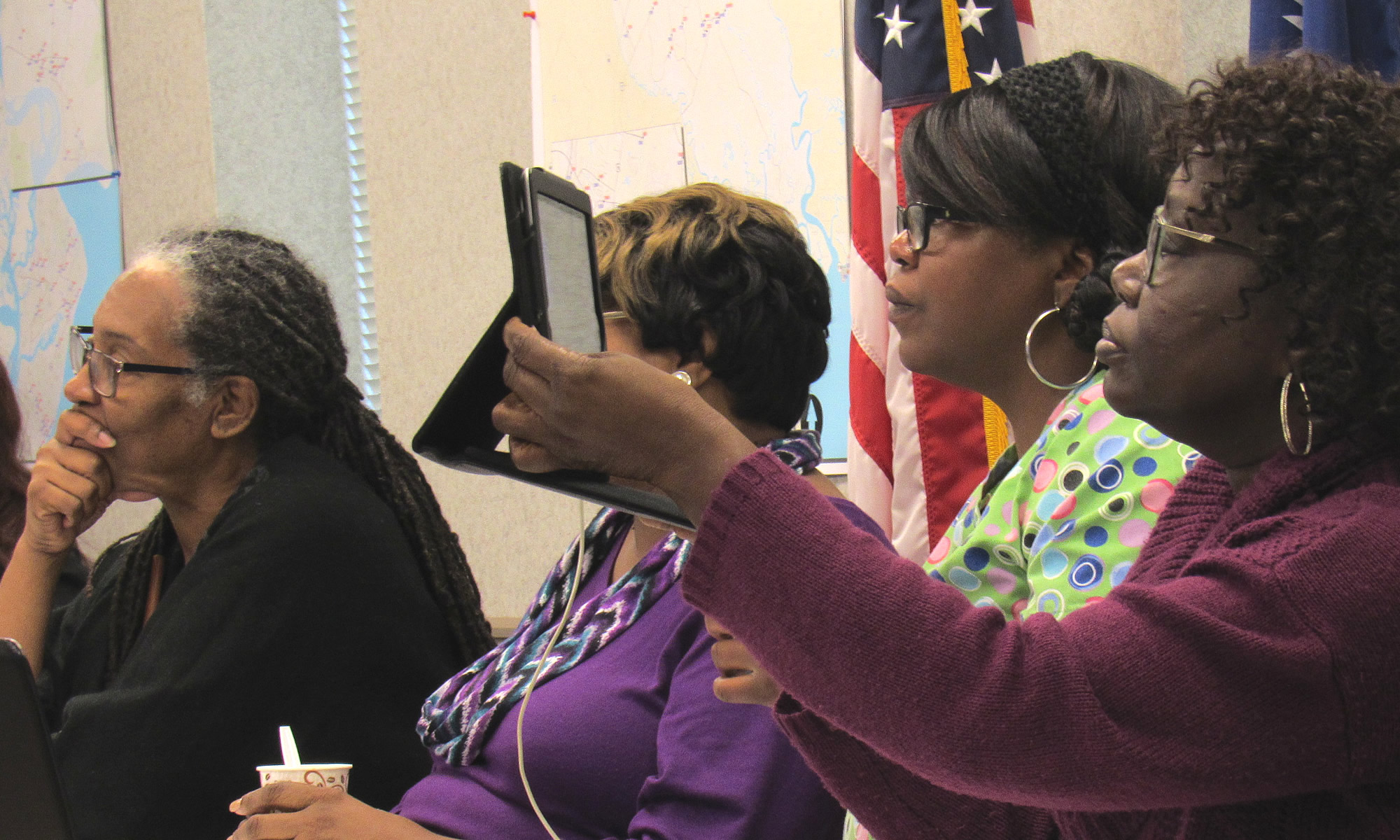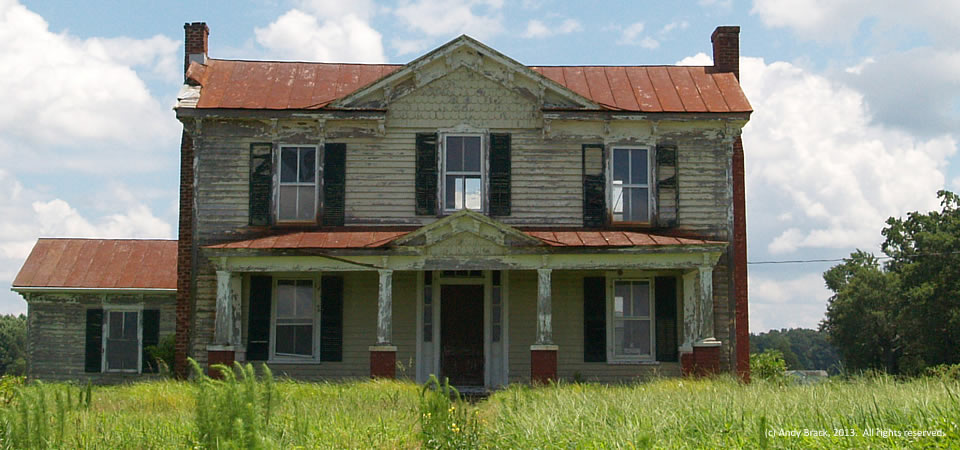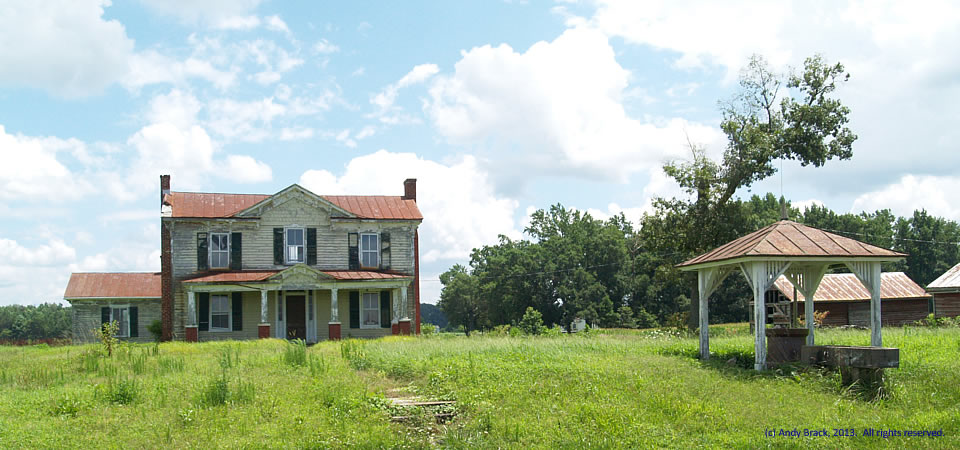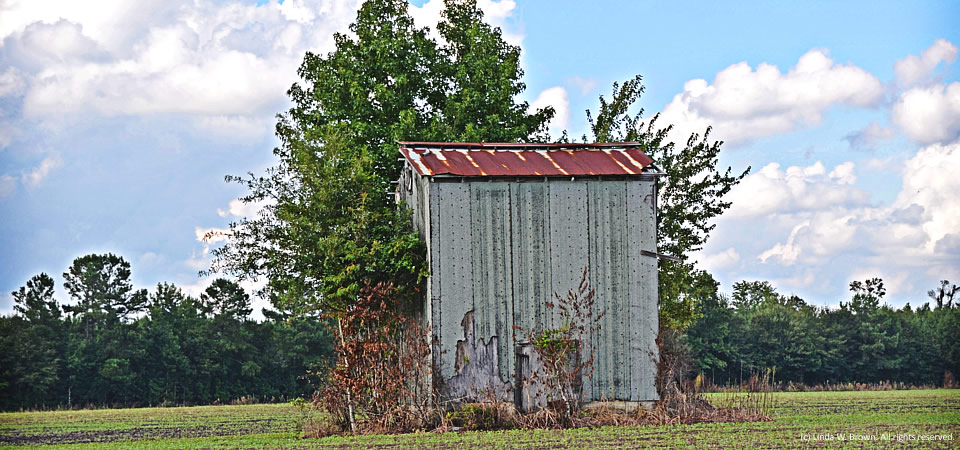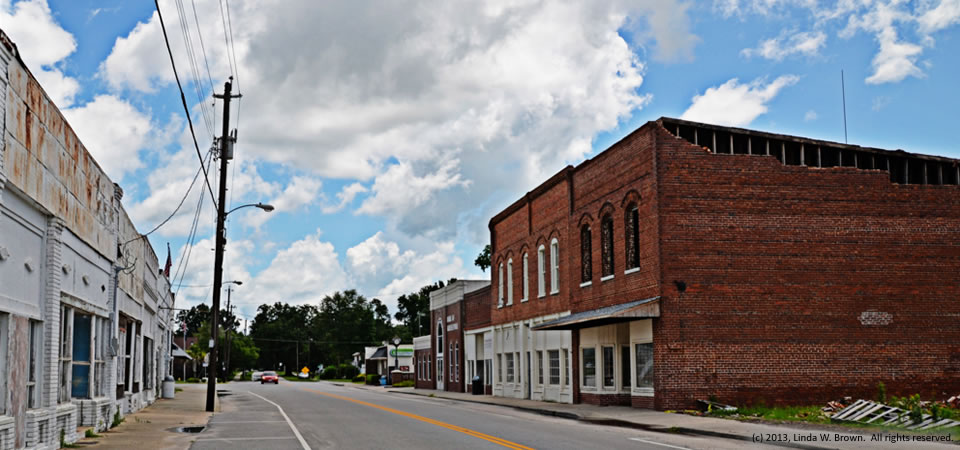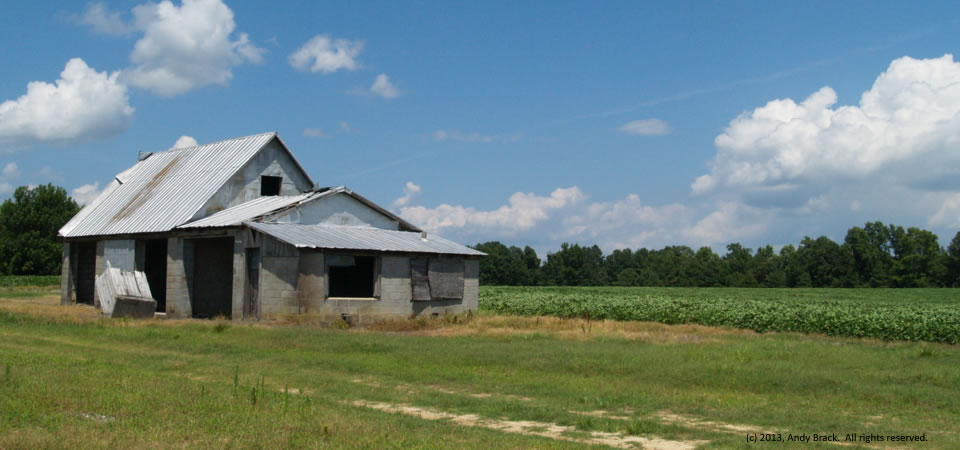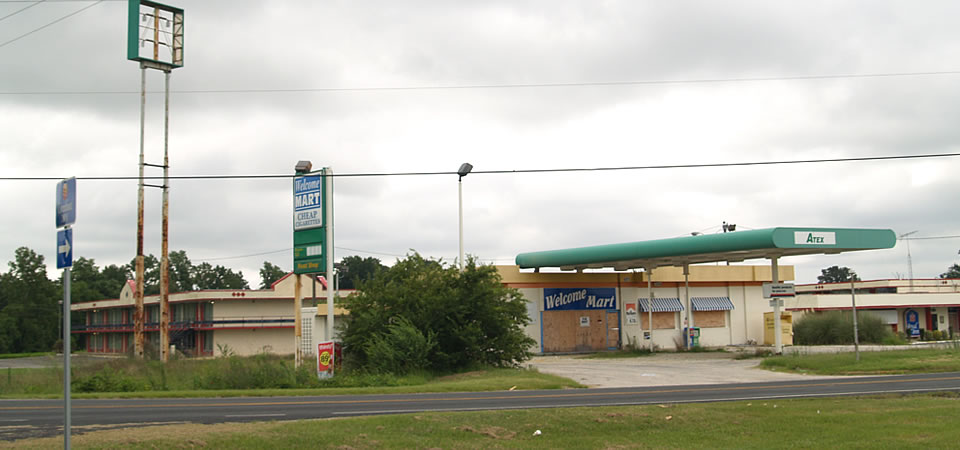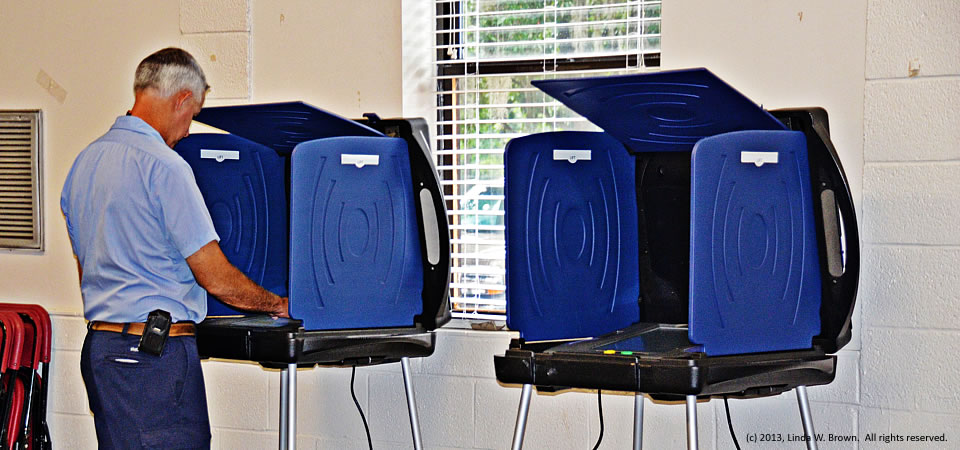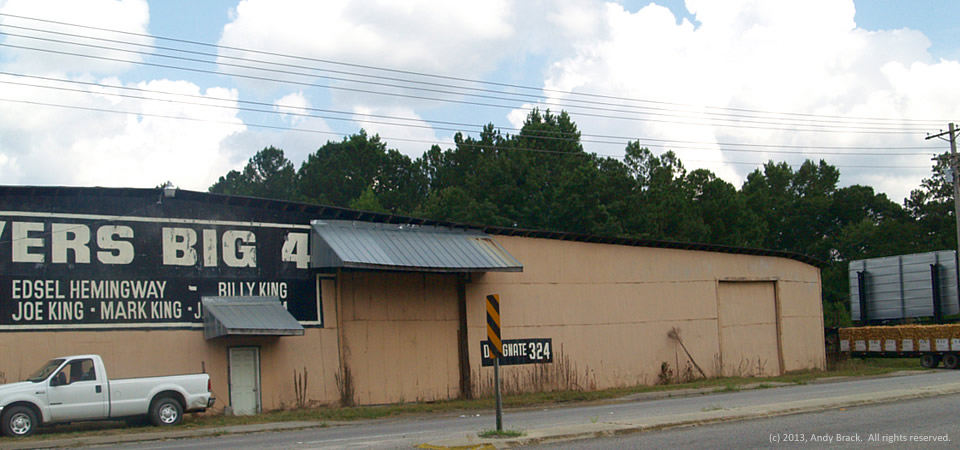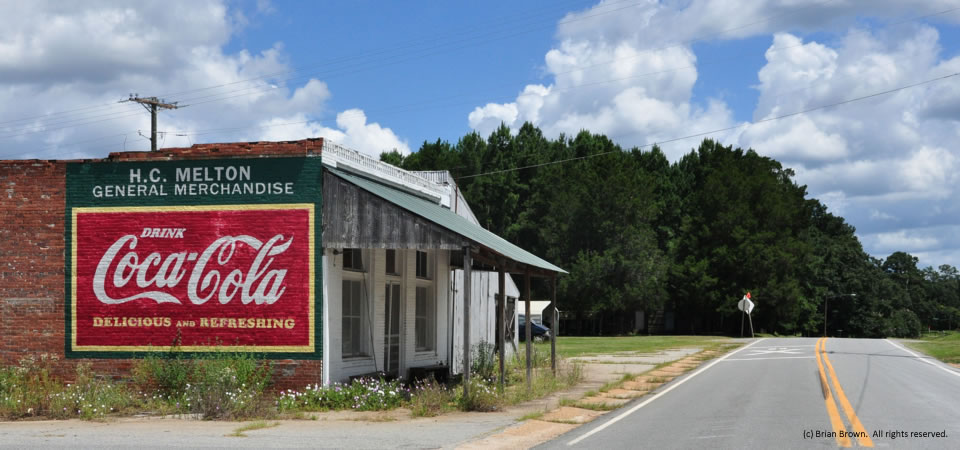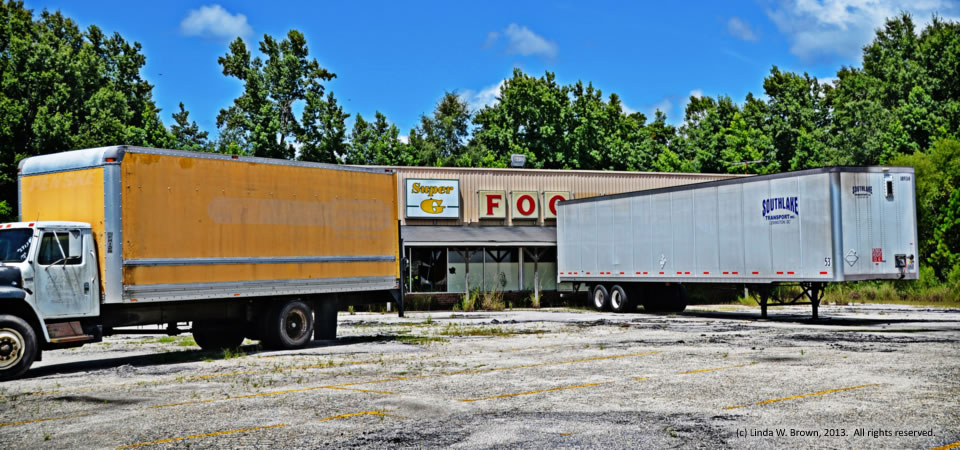
Retired editor and photographer Linda W. Brown remembers when Greeleyville, S.C., had a busy IGA grocery store. When it closed, a Super G Foods opened in the same location. Now, that store closed and the parking lot appears to be just a place where big rigs get parked at night and on the weekend.
And so Greeleyville has become a food desert — a place lacking in consumer choices for food, much like the store we profiled earlier this year in Allendale, S.C. Without a full-service store, Greeleyville residents have less healthy and fewer close options (think convenience store) and have to drive at least 12 miles to Kingstree to shop at a full-service grocery store.
Greeleyville, population 438, is in southwestern Williamsburg County. Just under 34,000 people live in the county, which is about the number who lived there in 1900, according to Census figures. Population peaked in 1950 at 43,807, but has dropped slowly since then.
About two-thirds of county residents are black, with almost all of those remaining being white. Only 2 percent of those in the county are of Hispanic descent. Some 32.8 percent of residents live in poverty, according to the Census. Of the county’s 1,921 firms, 36.5 percent are black-owned — a percentage that is three times South Carolina’s average.
Copyrighted photo taken on July 14, 2013 by Linda W. Brown All rights reserved.
